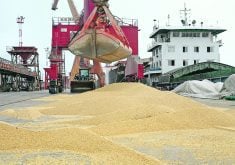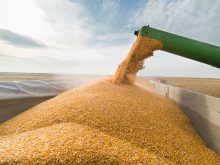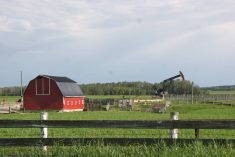“What does the farmer actually look for? Number one, how he can reduce the cost of his production. Number two, how he can get more (money for his crops). These are the two things he actually wants.”
This statement is true for the western Canadian farmer.
But it was said to me about farmers in India by the head of an Indian agricultural journalism company that deals with millions of producers across the vast subcontinent.
Farmers everywhere, it seems, are most concerned about the same things: better cost-of-production and better prices for what they produce. Everything else in farming is secondary to these two factors. (I’d add higher yields to the COP concern.)
Read Also

Flax sector sees omega-3 opportunity
SASKATOON — A global shortage of omega-3 oils could be an opportunity for the flax sector, says an industry official….
Farming is a survival industry, whether you’re operating 15,000 acres of flatland in dry central Saskatchewan or six acres of rolling territory in the heat of southern India.
Only those with the best production combined with better-than-average prices will survive in the long run. It’s all about margins, a truth that is realized as naturally in India’s villages as it is in North American farming forums.
That’s why it’s disturbing to acknowledge the truth of what Ian Boxall wrote this month in an opinion piece in The Western Producer: this year’s drought is exposing farmers once more to grain contract risks and losses, despite years of complaints, demands for action, and work by organizations like the Agricultural Producers Association of Saskatchewan to clean up the often murky arrangements that favour the rest of the industry at the expense of the farmer.
The problems highlighted by an APAS report — and publications like The Western Producer — remain years after the last contracting crisis.
“The report validates the concerns raised by Saskatchewan farmers when it comes to their comfort with grain contract terms and conditions,” wrote Boxall.
“Specific concerns focused on four areas: lack of transparency in calculating buyout and administrative fees, settlement costs, timing of buyouts and inconsistency in handling contract shortfalls.”
The ongoing problems with unfair contracts is leading many farmers to back away from contracting at all, which isn’t good for anybody in the western Canadian grain industry. Contracts should help everything work better for everybody by cutting uncertainty out of the system. When they do the opposite, something’s wrong.
That needs to be fixed — still.
It’s one unnecessary threat to farmers’ long-term survival chances today.
Another was raised in a disturbing story written by Robert Arnason, in which he brought forward farmer Kenton Possberg’s concern that some of the federal government’s priorities for scarce ag research money is way out of whack with farmers’ primary (survival) concerns:
“The (Agri-Science Program) Cluster consists of research activities in each of the AgriScience program priority areas: Climate Change and Environment; Economic Growth and Development; and Sector Resilience and Societal Changes,” reads the federal description of the intentions for its recent contribution to the Western Grains Research Foundation.
Combating climate change is a worthy goal. So is preparing for whatever these societal changes are envisioned as being. But that shouldn’t be getting sucked out of primary agriculture research funding. That should be coming from the federal environment department, which exists for those purposes.
Larding secondary concerns onto agricultural researchers is dangerous because it creates confused priorities, which leads to inefficiencies, risks alienating farmers from the researchers with whom they today have a close and trusting relationship, and threatens to pollute and corrupt the focus of the agriculture department, which should be working for a stable, sustainable and successful Canadian farming and agriculture industry.
Farmers are in a never-ending marathon to keep their cost of production as low as possible, making their yields as high as possible and earning as much as they can for every unit of production. If they don’t, they fail.
Farmers in India get that. Farmers in Western Canada get that.
It’d be good if the rest of the agriculture industry and the federal government got that too.
















